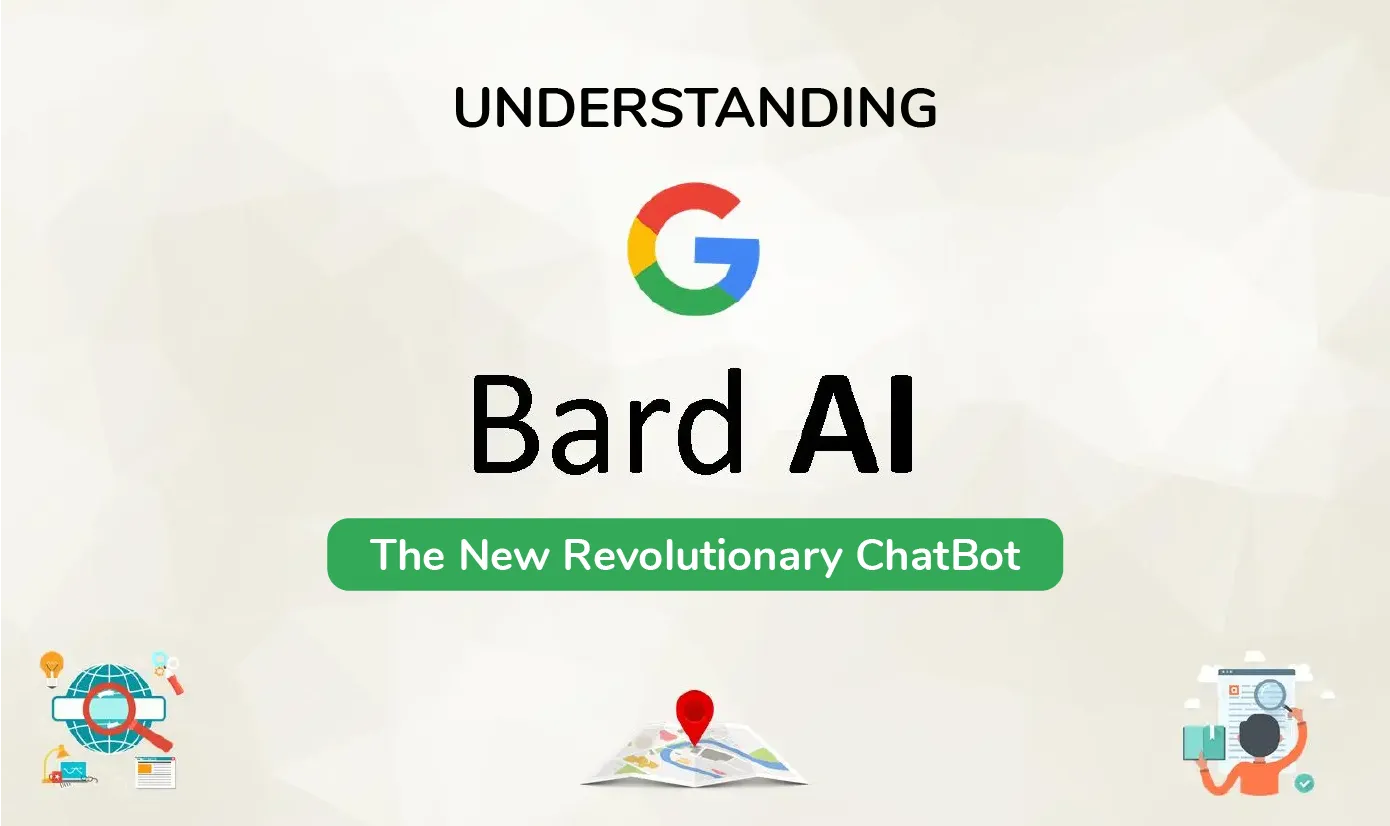
Like ChatGPT, Bard is a conversational AI chatbot that can answer users’ text questions in an everyday language. Any provocation can elicit responses that resemble those of humans. It can produce an essay, make travel planning recommendations, or tell you a joke.
The Google Linguistic Model for Dialogue Applications (LaMDA), which has been under development for several years, powers the AI service. To respond, Bard uses information from the internet.
“Bard can be a library for creativity and a launchpad for curiosity,” says Sundar Pichai, CEO of Google, “helping you explain new findings in the field of artificial intelligence to a student or learn more about the newest trends in sustainable fashion and then obtain suggestions to live a more eco-friendly lifestyle.”
It was initially made available with Google’s lightweight LaMDA model, which the company claimed is a smaller model that uses less computer power, allowing it to scale to more users and provide more input. It wants to combine external feedback with internal testing to ensure Bard’s responses reach a high standard for quality, safety, and groundedness in real-world knowledge.
Describe MUM
MUM is short for Multitask Unified Model and is a new technique for Google search, first unveiled in May 2021.
The upcoming launch was announced on 21 the fall of 2021, and more information about the technology was provided. MUM uses artificial intelligence (AI) or NLP to understand and analyze natural language and uses multimodal data to respond to sophisticated search questions.
MUM can process data from various media forms in multiple languages to provide answers. MUM can comprehend image, video, and audio files in addition to text.
LaMDA: What is it?
The foundation of many generative AI systems currently in use is LaMDA (Language Model for Dialogue Applications), Google’s language model built on the Transformer neural network architecture. Interestingly, ChatGPT’s GPT-3 language model lies at the heart of Google Bard.

A lightweight model version of LaMDA has been released with Google Bard to scale to more users and get feedback. This version is designed, and the layout is made to be used with Google’s internal testing and consumes significantly less computational resources.
LaMDA is a statistical method for predicting future terms using previous terms in a series. It is new because it can spark discussion in a manner that task-based solutions often do not. This enables the conversation to change subjects at any time.
How does Google Bard AI work?
One must be selected from the beta tester group to utilize Google Bard. You can launch the Google app on a mobile device, hit the chatbot icon, and then type your prompt or request into the box that appears.
At this point, the conversation may begin, and you can start putting forward requests or queries. Sadly, Google no longer accepts applications to join the Beta Testing team.
What Google Bard AI has to offer?
Although chatbots can’t technically hold conversations like people, they often give the impression that they can by producing a variety of digital text that may be used in almost any situation. With virtually any subject that is presented to it, Google’s chatbot tries to accomplish that by:
- aiming to display the fusion of strength, intelligence, and creativity
- gathering data from online comments and customer feedback using Google Forms surveys and Zonka Feedback
- using a LaMDA lite model version for preliminary testing
- gathering suggestions to advance the AI system in the future
Google Bard AI Use Cases And Illustrations
Several potential uses for Google Bard might make life easier and close knowledge gaps; the most typical ones are as follows:
- With the help of its powerful AI algorithms, questions can be answered appropriately.
- using the Google search to a familiar Google search
- Task automation that is more advanced and better, enabled by Google AI Personal AI support, especially for activities like time management and scheduling support.
- supporting user talks in a variety of contexts and serving as a social hub
- Make text or customer feedback analysis with AI
Google has a long history of utilizing AI to enhance the search for billions of users, and their most recent AI innovations are now building on this and creating totally new ways to interact with information, whether it be words, images, videos, or audio.
AI’s potential with Google Bard
With the increased chances that modern AI provides to improve our understanding of information and effectively translate it into knowledge, people can more easily and rapidly locate what they’re looking for. AI is useful when it’s necessary to synthesize ideas for problems without a single answer. Integrating AI into knowledge management tools can further enhance this process by enabling automated organization, analysis, and retrieval of information.
Eventually, AI-powered Search tools can condense complex data and viewpoints into rapid and understandable formats. These new AI functions will soon be made available through Google Search.
Google also plans to create tools and APIs to support making more creative AI applications over time. These developments may be essential for startups developing dependable and trustworthy AI systems.

ChatGPT vs. Google BardAI
Bard AI and Chat GPT perform comparable tasks, although they differ in other ways. ChatGPT gets information from the data it has been trained on, whereas Bard AI receives its lead from the internet to give answers. Although ChatGPT’s training is restricted to data gathered until 2021, this offers Bard an advantage. Yet Bard would receive real-time updates from the internet.
Generative Pre-trained Transformer 3 (GPT3), an autoregressive language model that uses deep learning to create text that resembles human speech, serves as the language model for ChatGPT. It was introduced in 2020. Yet, Bard AI is driven by Google’s LaMDA.
ChatGPT is allegedly biased, as some users have claimed. Users have observed the AI chatbot responding to commands in a racist and sexist manner. Users can avoid it, though, simply reframing their inquiries. Experts point out that because Google’s Bard AI gets its knowledge from the uncensored internet, which also hosts disinformation, it may have bias issues of its own.
Limits of Google BardAI
Chatbots and conversational AI have significantly transformed how software is developed, used, and managed, It can apply to any software using automation like payroll software for small businesses also you can use best HR software. They are reorganizing email programmes, digital assistants, and search engines. Despite having a lot of potential, the technology has some drawbacks.
Conversational AI chatbots still have a long way to perform before they can discriminate between fact and fiction and prevent partial responses since they learn from the massive volumes of information available on the internet.
In fact, an honest mistake was included in Google Bard’s first demo, which was the most recent instance of the program’s blunder. Google provided a GIF showing one of Bard’s answers to a query that contained false information. The GIF displayed the question –
What fresh revelations from the James Webb Space Telescope can I share with my nine-year-old?
…with the response that the device captured the first images of a planet outside of our solar system. On Twitter, astronomers were eager to tell us that this claim was false because the first photograph of an exoplanet was only captured in 2004.
This blunder underscores the fundamental drawback of AI chatbots and the significance of a robust testing methodology. To stay up with the fierce competition that ChatGPT has created to their comparatively untapped ecosphere, Google is trying to improve Bard’s responses and satisfy a high threshold for quality in real-world information.
How will Bard AI be a Game Changer for Chat Bots?
Bard AI is a game-changing chatbot that uses artificial intelligence (AI) to interact with users engagingly and naturally. It is designed to be a virtual assistant for businesses, allowing them to automate customer service, sales, and marketing tasks. It can understand natural language, interpret user intent, and respond accordingly. It can also be programmed to learn from customer interactions and conversations, thereby becoming more intelligent and efficient over time. The Bard AI chatbot can also integrate with other systems and platforms, enabling businesses to optimize their customer service, sales, and marketing operations. By leveraging AI, Bard AI chatbot is revolutionizing how businesses interact with their customers, resulting in improved customer satisfaction and loyalty.
Is Google Bard AI Not Living Up to Expectations?
While Google Bard and related AI technologies may significantly affect marketing, advertising, SEO, and how people search, many people, including Alphabet’s own ergonomic chair, John Hennessy, believe that Bard still needs to be ready for prime time. Hennessy stated that “Google was reluctant to productize this because it didn’t think it was actually ready for a product yet” in an interview with CNBC, admitting that in his perspective, the technology is not yet production ready.
Hennessy continued by claiming that one of the reasons Google delayed announcing Bard was that it was still returning erroneous results for inquiries. Hennessy advised: “You don’t want to release a system that either says the wrong things or occasionally says harmful things.”
On Google’s internal site Memegen, Google employees have been posting dismissive memes about how the Bard launch was handled, blaming CEO Sundar Pichai for what many regards as a premature derailment of the project. Google employees were also quick to criticize the hurried Bard unveiling.
Employee disapproval of the news, which was made a day before Microsoft announced its own generative AI conversation feature for its Bing search engine, is comparable to how the general public received the announcement. Apart from the factual error, Google made an effort to steal Microsoft’s thunder by announcing Bard in a blog post that offered little information on the features and capabilities of the product and instead sparked rumors about how it would be incorporated into the Google search engine.
How is WaveScript accelerated like ChatGPT and Bard AI ?
JavaScript itself is not typically used to build machine learning models, but it can be used to implement and deploy machine learning models that were built using other languages and libraries.
One approach to using JavaScript to generate content using a machine learning model is to build the model using a language like Python, using libraries such as TensorFlow or PyTorch. Once the model is trained and saved, it can be exported as a format that can be loaded and used in JavaScript.
There are also several JavaScript libraries available for machine learning, such as TensorFlow.js and Brain.js, which allow you to build and train machine learning models directly in JavaScript.
Once a machine learning model is available in JavaScript, it can be used to generate content by feeding it input data and using its output to create new content. For example, a text generation model could be trained on a large corpus of text and then used to generate new sentences or paragraphs based on a given prompt.
WaveScript is built on a combination of technologies and languages. It is written in JavaScript, with the help of Node.js, Express, MongoDB and React for the front end. The back end is powered by Node.js, which is a server-side JavaScript runtime environment. The database is powered by MongoDB, a NoSQL database that stores data in documents instead of tables. Express is a web application framework for Node.js, which is used to build the APIs. React is used for the front end development, which is a popular JavaScript library for building user interfaces. Finally, WaveScript is hosted on the cloud using Amazon Web Services (AWS)
However, there are some AI libraries and frameworks built in JavaScript, such as TensorFlow.js, which allows developers to train and deploy machine learning models in the browser or on Node.js servers using JavaScript.
To build a content-generating AI model using JavaScript, you would typically need to follow these general steps:
- Data preparation: Collect and preprocess the data that the AI model will use to learn and generate content.
- Model architecture: Design the architecture of the neural network, which will process the input data and generate the output.
- Training the model: Use TensorFlow.js or other JavaScript-based machine learning libraries to train the neural network on the data.
- Deployment: Deploy the trained model to a dedicated server hosting or web page using Node.js or other JavaScript-based web frameworks.
It’s important to note that building an effective AI model for generating content requires expertise in both machine learning and natural language processing (NLP), as well as a deep understanding of the specific problem you are trying to solve. It’s also important to have access to high-quality data to train the model effectively.
Last Words on Google Bard
The public’s perception and use of search will undoubtedly be impacted by generative AI, and publishers, marketers, and advertising will all be affected. When Google’s Bard is ready, it will also alter SEO procedures more than past changes to the search algorithm, requiring content producers to concentrate on producing informative content that responds to more complex or sophisticated queries. Bard also raises concerns about attribution and the fits effect-site traffic because, if it can sum up a comprehensive response to a question, users will only need to visit the page(s) from whence the information was generated.
Frequently Asked Questions
- What is Google BardAI?
Google Bard AI is a natural language processing (NLP) model developed by Google that can generate original poetry in various styles and forms.
- How does Google Bard AI work?
Google Bard AI is based on a deep learning algorithm that has been trained on a massive dataset of poetry from different eras and cultures. The model uses this data to learn patterns and structures in language and can generate new poetry by combining these patterns in novel ways
- How Can I Try Google Bard AI Chat?
Google Bard AI is in its very early stages and only available to some very trusted testers before making it widely available to people. Just like all other Google projects, Bard will be available to all people to try and give their feedback. This will also give Google ground-level data about how people interact with Bard AI, and with this data, Google can improve Bard AI.
- Is Google Bard AI a Chatbot?
Yes, Google Bard AI is a Chatbot that uses artificial intelligence to answer any question. Just like ChatGPT, it can give comprehensive answers to questions. It can help a lot of people like students and even teachers by giving them accurate and humane answers. Google may implement this Bard AI in Google search to provide rich search results to the user. In the early stages, it may be available as a chatbox just like the ChatGPT.

.webp)










